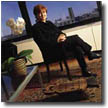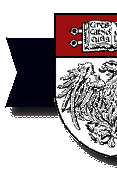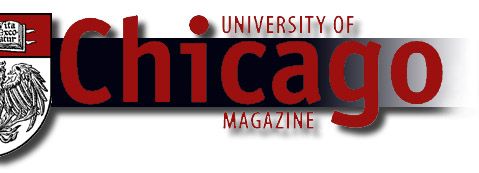|

 |
|
| |
|
 |
| History Rethought |
| As a doctoral candidate at Brandeis University in the early
90's, William J. Novak formulated a dissertation that could
have been dismissed as the unlikely conclusion of a presumptious
young historian. |
|
| |
|
 |
| American Seoul |
| In 1978, Kyoung Ja Hyun began a relationship that
would prompt her to leave her native Korea. |
|
| |
|
 |
| Innate Gestures |
| As an amateur potter shaping clay or as a professional linguist
studying gestures, U of C professor Susan Goldin-Meadow is fascinated
by what the hands can create. |
|
|
| Citations |
|
Music Becomes Electric
|
| In
the CD Dialogues with My Shadow, U of C senior lecturer and Computer
Music Studio director Howard Sandroff and Chicago Symphony
Orchestra clarinetist John Yeh debut a collection of computer- and
clarinet-produced compositions. The new release features their interpretation
of “Dialogue de l’ombre double,” composed by Los Angeles Philharmonic
conductor Pierre Boulez. It also includes Sandroff’s own “Tephillah”
and original works by Rami Y. Levin, PhD’91, and Robert B. Carl, PhD’83.
|
| Ancient
Shadows |
| Astrophysicist
Jean Quashnock, a research scientist at the Enrico Fermi Institute,
revealed at the January meeting of the American Astronomical Society
a means of mapping what the structure of the universe looked like
some 13 billion years ago. Quashnock’s novel method relies on tracking
the shadows cast by quasars—bright, point-like objects that can be
seen nearly as far away as the edge of the visible universe. Previously,
astronomers could only make detailed observations of nearby galaxies.
|
| Russian
ties your tounge? |
Then
maybe you didn’t learn it early enough. In an October 1997 issue of
the Journal of Comparative Neurology, Peter Huttenlocher, a
U of C professor in pediatrics and neurology, and research technician
Arun Dabholkar explain that foreign languages and music are
easier to master before age 12, when synapses in the auditory cortex
of the brain are most active, while high-order thinking skills like
motivation and math may not sharpen until early adulthood, when the
middle frontal gyrus reaches its synaptic peak.
|
|



